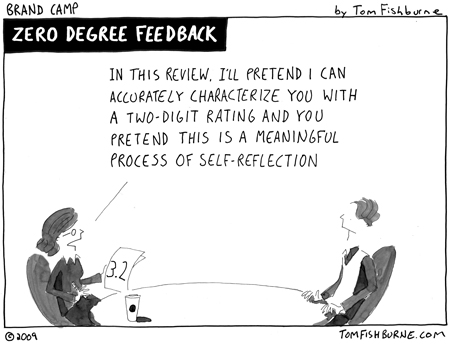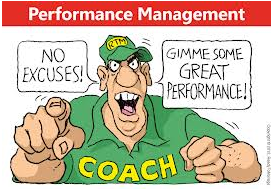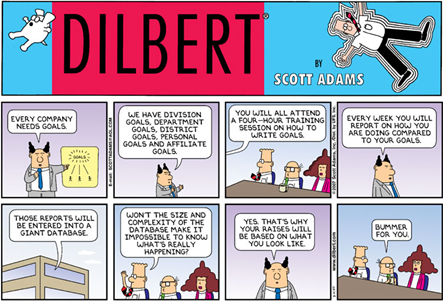The Importance of Feedback in Engagement, Leadership and Productivity
There is an undeniable body of evidence, both research-based and practical experience that says that frequent respectful, positive and constructively critical feedback leads to increased engagement.
We know that when  a person clearly understands what’s expected of them, knows what they are doing well and can clearly identify what they need to do to develop and improve (and are given the chance to do that) they will perform better and be more productive. Even the simple act of someone feeling listened to, heard and understood has a massive impact on how they work and how they feel. That same principle applies to customers – the core reason companies and the public service are in existence.
a person clearly understands what’s expected of them, knows what they are doing well and can clearly identify what they need to do to develop and improve (and are given the chance to do that) they will perform better and be more productive. Even the simple act of someone feeling listened to, heard and understood has a massive impact on how they work and how they feel. That same principle applies to customers – the core reason companies and the public service are in existence.
SIDE NOTE: Funnily enough, literally as I’m writing this, the technician who’s come in to fix our phone line (at last!) just remarked: “the bloke from the company in the office next door has just come down & spoken to me like sh!t, no respect at all – if people speak to me like that, I’ll speak like that back! I hate dealing with people like that!”
Highly effective internal communication and feedback has the potential to affect virtually every type of business outcome within and surrounding a company, with an eventual positive impact on a company’s bottom-line performance (Yates, 2006), be that financial or public service orientated performance. Obviously the same applies to external communication - imagine how the technician might respond to that company owner in the future if he’s asked to fix his phone line...
“Communication makes a positive difference in employee engagement. High-engagement employees receive communication from their supervisors and senior management far more frequently than low engagement employees.” (Watson Wyatt, 2006)
From our direct experience delivering our Giving & Receiving Feedback (Leadership Development/ Performance Improvement/ Culture Change) Program to over 1000 people and hearing from the horse’s mouth about the importance of feedback, the link between feedback and engagement is indisputable.
The Global Corporate Leadership Council independently benchmarked our Giving & Receiving Feedback (Leadership Development/ Performance Improvement program) against other leadership programs across the globe (at a client’s request, not ours).
When managers were asked to estimate the impact of the Giving & Receiving Feedback program on their employees’ overall performance, their response was that it improved performance on average by 26%.
 Engaged employees are willing and better able to function effectively with their colleagues and take their duties further than “just what is required” to leverage the collective potential of the team into better – often superior - performance.
Engaged employees are willing and better able to function effectively with their colleagues and take their duties further than “just what is required” to leverage the collective potential of the team into better – often superior - performance.
And the ability to give – AND receive - feedback are core elements of everyday leadership at ALL levels. If a leader can’t do these well, then they are a much less effective leader. Plus any other learning they try to impart to their teams is also a good deal less effective.
A Gallup poll of more than 1 million employed U.S. workers concluded that the No. 1 reason people quit their jobs is a bad boss or immediate supervisor. "People leave managers not companies...in the end, turnover is mostly a manager issue," Gallup wrote in its survey findings.
Bigger problems arise in organisations where the pay and other working conditions are too good for the person to leave, or where there’s little alternative employment and the disengaged person hangs around. People then simply switch off, and do the bare minimum to just fly under the radar and get by – which equals a massive loss of productivity and performance. And that often impacts on other team members, if they weren’t already tuned out, and the entire team’s productivity and performance drops further.
We always say “what do you get left with if you take all the people out of an organisation’s building? Quite simply, a shell of a building with a plaque on the front, and lots of idle telephones and computers. Very soon the machine stops.”
However, what happens if you fill the building with disengaged employees? The machine keeps going, but grinds on slowly and inefficiently. However, fill it with engaged employees and:
“Companies in which 60%(or more) of the workforce is engaged have average five-year total returns to shareholders (TSR) of more than 20%. That compares to companies where only 40 to 60% of the employees are engaged, which have an average TSR of about 6%” (Baumruk, Gorman, Jr., & Gorman, 2006).
For the Public Service, the equivalents of “shareholders” are usually the neediest and most disadvantaged people in the community who need the very best service simply to survive. At best they are the very taxpayers paying for the services and the people.
“Highly engaged employees achieve 12% more of their goals than employees with low engagement” (Development Dimensions International, 2006).
Twelve percent of  an employee salary of $70,000 equates to $8,200 per person. In a team of 10, this equates to $84,000 – the equivalent of 1.2 extra employees (or needing 1.2 employees less). Over a department of 10,000 people, that’s a productivity improvement (or a saving) of $8.4m ($8,400,000). Over a sector employing 300,000 people, that’s a productivity improvement (or a saving) of over a ¼ of a billion dollars - $252m ($252,000,000). And that’s just a 12% improvement, and just looking at one salary band.
an employee salary of $70,000 equates to $8,200 per person. In a team of 10, this equates to $84,000 – the equivalent of 1.2 extra employees (or needing 1.2 employees less). Over a department of 10,000 people, that’s a productivity improvement (or a saving) of $8.4m ($8,400,000). Over a sector employing 300,000 people, that’s a productivity improvement (or a saving) of over a ¼ of a billion dollars - $252m ($252,000,000). And that’s just a 12% improvement, and just looking at one salary band.
However, productivity improvement can’t happen unless free communication and mutual trust are present within the workforce (Barker & Camarata, 1998). Not surprisingly then, the methods of communication and feedback an organisation/team employs as well as the manner in which those methods are carried out can have a large effect on both the process and results achieved.
As we mentioned earlier, by improving managers’ ability to give and receive feedback, according to the independent Global Corporate Leadership Council benchmarking, our Giving & Receiving Feedback program improved performance on average by 26%. In a team of 10 people on an average salary of $70,000, that’s a productivity improvement equivalent to $18,200 per person. Over a department of 10,000 people, that’s a productivity improvement (or a saving) of $182m ($182,000,000). In 300,000, that equals $5.46 billion.
William Kahn, whose theory of engagement and disengagement at work revolutionized the conception of what it meant to be committed to one’s work, recognized this in his 1990 study of camp counsellors and architects.
Specifically, Kahn found that in an environment where information was shared freely among organizational members without fear and where meaningful communicative interactions occurred regularly, people were more willing to put all of themselves into their work. Kahn found that people are only truly willing to devote their energy where it will be appreciated (Kahn, 1990). When the groundwork for meaningful communication is missing, people’s willingness to exert discretionary effort will be missing as well – and hence performance and productivity will drop.
The importance of effective communication doesn’t stop here though. As anyone familiar with the Gallup Workplace Audit (GWA) knows, more formal elements of internal communication are as important as any in ensuring that your company’s employees are pushing the firm forward when they’re at work.
These formal elements translate to relatively straightforward goals—making sure that employees know what to do on the job, recognizing and acknowledging workers for superior performance, and facilitating a setting where discussion of performance and progress occur frequently—and help to satisfy the basic needs of employees with the effect of freeing them to focus on their work instead of the hurdles they have to face to perform it (Harter, Schmidt, & Keyes, 2002).
Findings such as these are in keeping with the value-profit chain laid out by Carrig and Wright; effective communication, as a subset of effective management practices, can drive employee satisfaction and engagement. A satisfied employee is more willing and able to take the steps necessary to ensure customer satisfaction, which itself drives customer loyalty and, finally, profitability and growth (Carrig & Wright, 2006).
Thus with a potential operational path for communication to affect firm-level performance laid out, the question of how to fine-tune internal communication to maximize your company’s return on its engagement efforts presents itself.










































